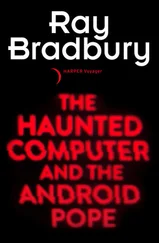At the 1985 Winter Consumer Electronics Show—an annual extravaganza in Las Vegas that dwarfs even such popular trade shows as COMDEX (and the increasingly commercial West Coast Computer Faire)—I saw what might well be the next escalation in this techno-legal war on the highways. An exhibitor was showing a product that not only detected radar but also sent out a phony signal to convince the radar that a driver was going at the legal speed. When this product reaches the market, it will mean that machine will be pitted against machine, and it will seem that the human drivers no longer will be a factor—even though they will still cause virtually all of the traffic accidents. This prospect was a little chilling to me, as the founder of a high-technology company, and I felt a little nervous in general about the latest, inevitable technologization of our lives.
It isn’t news that high technology tends to beget higher technology. In the software field, the bootstrapping effect has been unusually powerful and rapid. In the days of the first generations of tube-powered computers, the beasts were programmed in raw machine code—long strings of zeroes and ones. Throughout the early 1950s, there was much debate over the future of “automatic programming”—the term used then for programs such as assemblers, compilers, and interpreters for higher-level languages. Most programmers of the day were skeptical about whether these translators could do the job any faster or more efficiently than human programmers— and virtually everybody agreed that programming was too highly technical for anybody but the most highly trained mathematicians and engineers.
It turned out that these special-purpose programs actually made a higher level of programming possible and transformed the programming population from a tiny elite to a rapidly growing profession. These programming tools indeed proved to be much faster and more efficient than unassisted human programmers and made it possible for some scientists, many college students, and even high-school wizards like Bill Gates, Paul Allen, and Steve Wozniak to learn how to program.
The automation of programming has not abated in the age of the microcomputer; indeed, the creation of increasingly sophisticated programs to help programmers write other, increasingly sophisticated programs has continued to accelerate. It may be that the software of tomorrow can be written only by other software, perhaps administered and guided by a team of designers. In that event, what will happen to the current generation of software people?
The answer to that question depends upon the way businesses evolve as well as upon the way technology changes. In the process, entrepreneurs and programmers face somewhat different adjustments. For the former, the evolution of the software industry thus far—from an underground swap meet to a consumer industry—has so changed the nature of many dominant software companies that it has put pressure upon many software entrepreneurs to move on.
In general, entrepreneurs, especially in the software business, tend to become entrepreneurs because they are uncomfortable with the normal roles afforded them by society and the business world. Their inner lives are usually far richer than their external surroundings, and they may prefer to elaborate their own visions than to work out a compromise with “normal” society. When entrepreneurs succeed, they may find that their sudden social acceptance (and monetary rewards) causes them to drift away from those behavior patterns that drove them to be entrepreneurs in the first place. By becoming more “normal,” they may discard their spark of originality as well. Or they may simply become uncomfortable as society co-opts the entrepreneur’s world and turn their attentions to some field that is not so popular.
After attaining a major success, many entrepreneurs push on to other risky enterprises, because success was never really their goal at all. Rather, it was to create a world in which they had some measure of control. For this reason, some of this breed may push on to the outer frontiers of technology as large firms move into the software arena. After all, microcomputers as we know them aren’t the be-all and end-all of technological achievement in the field of personal computing. There are other achievements to come—optical computers, rather than electronic ones, and dazzling new visual displays and artificial intelligence applications to explore and to build industries around.
The changing environment in the industry has had drastic effects on the destinies of programmers as well as on those of entrepreneurs. If you ask the two young programmers who wrote Brøderbund's latest hit, Print Shop, you’ll discover that the era of the teenage millionaire programmer is not over. But the competition is certainly a lot tougher than it used to be. Whether or not the era of the individual programming genius has come to an end is a matter of debate. Nevertheless, even old hands like Budge and Lutus and Draper are going to have to work much harder to make the kind of money they made in the early 1980s.
For in time, programming will be done more and more by teams of programmers and less by individual hackers. It is true that teams are not always faster or better than a lone programmer when it comes to creating programs of moderate size. But with the huge programs that will inevitably evolve as the capacity of computer hardware expands, it won’t be possible for lone hackers to produce competitive software in a reasonable amount of time.
Undoubtedly, some hackers will make good use of the new programming tools that will be emerging, and some will move on to artificial intelligence programming and other software frontiers. But the day of the hacker as the superstar of the microcomputer software industry is probably on the wane. Hacking as a creative process is less organized than intuitive, less purposeful than persistent. When computers first spread to college campuses in the late 1950s, programmers tended to sort themselves according to their programming methodologies. Those who truly studied their machines and used them to accomplish orthodox programming goals, who organized and planned and structured their work, called themselves programmers, not hackers.
Many hackers, on the other hand, were generally drawn into programming for the sheer visceral and cerebral pleasure of it, without first understanding exactly what they were doing much of the time, and without organizing their work. They often begged, borrowed, or stole access numbers so that they could program and then play games like Spacewar on multimillion-dollar machines until dawn. They had no “serious purpose,” and they not only knew it, they flaunted it.
What the first hackers did have was raw talent, as well as a community of like-minded ne’er-do-wells, and a few mentors who were smart enough to let the hackers play their games in return for the creation of some fast, brilliant system software like the operating systems for the first time-sharing computers. Above all, they had an intensity of purpose that comes only from truly enjoying what one is doing. Without really ever intending it to be so, these hackers became the real experts. When time sharing and interactive computing came along, they were the people who built the prototypes of the systems that would eventually bring programming out of the temple and to the masses.
When a marketplace for microcomputer software emerged, the hackers often knew the machines better than the engineers who had built them. They knew all the programming tricks—primarily ways and means of putting more code in less memory space and having it run twice as fast as “structured code.” They often broke all the rules of good programming technique, but then most of them had never been taught good technique. Nobody had ever taught Steve Wozniak how to create a disk operating system, so he went out and built one so much more efficient and economical than any existing disk drives that it helped ensure Apple’s success. Lutus and Draper and a dozen other self-taught programmers did things their own way and made fortunes.
Читать дальше










